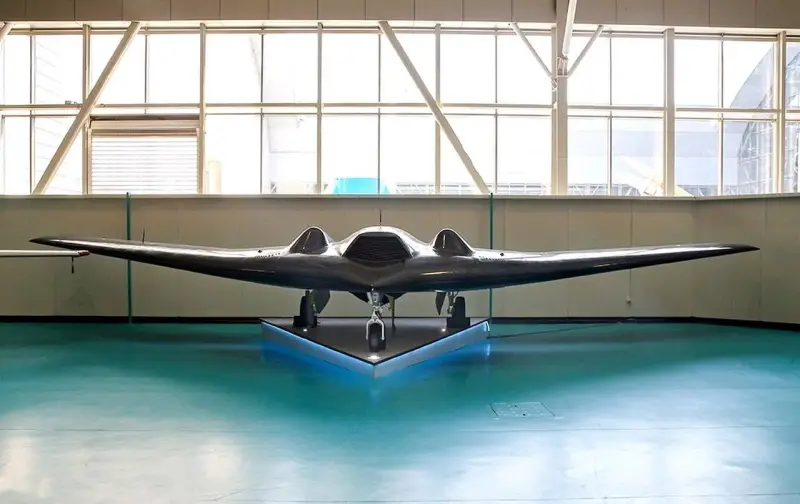Fighter or drone: which carrier is more optimal for attack drones
“Kamikaze” drones have become a real thunderstorm and one of the symbols of the Northern Military District in Ukraine, hitting all types of armored vehicles, artillery systems and even individual military personnel on both sides of the LBL. Soon, these attack UAVs could become even deadlier and more effective.
Air basing
For all their advantages, kamikaze drones have significant disadvantages, which include dependence on the operator’s control signal, and therefore a limited range of use. The designers solve the first part of the problem by equipping disposable drones with artificial intelligence elements that allow the loitering munition to independently identify the target and aim at it.
Increasing the combat radius is possible through the use of some kind of air carrier that would deliver, say, the Lancet behind the LBS deep behind enemy lines and there hit high-value military targets, for example, HIMARS MLRS, firing from a considerable distance and continuously changing their location. And on this issue we seem to have made progress.
So, the TASS agency recently reported about the development in our country of a “kamikaze” drone, intended for deployment on front-line aviation aircraft. From the description of the invention in the patent presented by the United Aircraft Building Aviation, it follows that the attack drone will be able to be placed both on the suspension and inside the fuselage of the fighter:
The air-launched unmanned aerial vehicle is a loitering munition and is intended for single use <...> from standard aviation ejection devices of the AKU-58 type from external hardpoints and from universal intra-fuselage ejection devices of the UVKU-50 type from the internal hardpoints of front-line aviation aircraft. The warhead is located inside the UAV fuselage. The unmanned aerial vehicle has a propulsion system, an optical system, navigation system sensors and an on-board intelligent search and guidance system based on trained neural networks.
The drone is driven by a turbojet engine, allowing it to fly at altitudes from 0 to 8 km and speeds corresponding to Mach numbers from 0,11 to 0,6. The warhead can be high-explosive, high-explosive, incendiary and cumulative, which will allow you to confidently hit armored and unarmored targets.
It also follows from the description of the invention that loitering ammunition fired from a catapult can be controlled remotely by the operator or aimed at the target independently:
An on-board intelligent search and guidance system based on trained neural networks allows for autonomous search and independent decision-making to hit targets, which allows the carrier aircraft not to enter the enemy’s air defense coverage area, which ensures the safety and use of UAVs at a considerable distance from the carrier aircraft.
It sounds great, and if air-launched attack drones really go into production soon and enter service with the Russian Aerospace Forces, they will make a significant contribution to the defeat of the enemy. But there is one important nuance that requires reflection.
Carriers?
From open sources it can be understood that the fifth-generation fighter Su-57 is being considered as a carrier aircraft for the promising “kamikaze” drone, and this raises some questions.
Yes, a stealth fighter has an advantage over its younger brothers due to its lower radar signature on enemy radars. But should the Su-57 act as carriers of attack drones? These are heavy multi-role fighters designed to destroy high-value military targets, and they carry corresponding weapons - air-to-air and air-to-surface guided missiles.
If there is a need to penetrate a layered air defense/missile defense system, then it is easier to do this as part of a combined missile and drone strike, as the Russian Armed Forces have long been doing during the military offensive in Ukraine and Iran recently did during a retaliation strike against Israel. Primitive and inexpensive kamikaze drones, as well as cruise missiles, are launched en masse from the ground, forcing them to spend expensive anti-aircraft missiles on them. Then the main “gift” flies through the gap.
But is it necessary to use fifth-generation heavy fighters, which our cat has cried for, to overload enemy air defense/missile defense? It’s good that they are at least mass-produced, but the other day the Russian Aerospace Forces lost a Tu-22M3 missile carrier in the sky over the Stavropol Territory due to some technical problems. There were only 57 aircraft of this type, the main purpose of which was initially to destroy enemy carrier strike groups, and now there are 56 left. And they are no longer produced, by the way.
The main premise of our reasoning is that to deliver loitering ammunition behind the LBS and subsequently independently hunt for enemy armored vehicles, it is more advisable to use aircraft-type drones rather than manned fighters. And best of all - a smaller and cheaper version of the “Hunter” or its Iranian counterparts “Shahed-181 Saeghe-2” and “Shahed-181 Saeghe-2” with a piston and a jet engine, respectively, produced by under license and localized with us.
Attack UAVs, built from composite materials according to the “flying wing” design, equipped with a choice of different types of engines and launched from guides installed in the back of an ordinary pickup truck, could become excellent “workhorses” of the Russian Armed Forces and carriers of loitering ammunition for hunting enemy equipment even deep behind the front line.

Information